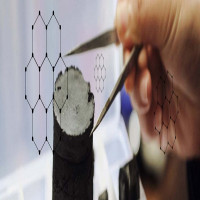Harnessing the Potential of Marine Polysaccharides as Valuable Resources

Strong 8k brings an ultra-HD IPTV experience to your living room and your pocket.
Source of Marine Polysaccharides
Marine polysaccharides are primarily sourced from a diverse range of marine organisms that thrive in oceans and seas. Seaweeds are the primary and most abundant source of marine polysaccharides. Seaweeds with high polysaccharide content, such as red algae (Rhodophyta), brown algae (Phaeophyceae), and green algae (Chlorophyta), have been extensively studied for their polysaccharide composition.
Apart from seaweeds, other marine organisms like microalgae, mollusks, crustaceans, and even bacteria have also been identified as potential sources of marine polysaccharides. These organisms synthesize polysaccharides to fulfill various physiological functions, such as structural support, energy storage, and defense mechanisms. Harnessing these valuable polysaccharides from marine organisms opens up exciting avenues for scientific exploration and industrial applications.
What are the Common Marine Polysaccharides?
Agarose
Agarose, derived from seaweed, is a widely recognized marine polysaccharide. Agar is a galactan derived from red algae and contains α-1,3-linked L-galactose and β-1,4-linked d-galactose. It forms a gel-like substance when mixed with water, making it ideal for applications in molecular biology, including gel electrophoresis, DNA isolation, and protein separation.
Carrageenan
The structure of carrageenan, the main cell wall polysaccharide found in red algae, varies depending on the type of algae. In general, carrageenan is made up of sulfate esters of α-1,3-linked 3,6-anhydro-d-galactose and β-1,4-linked d-galactose.
Alginate
Brown algae is the source of alginate, which has remarkable gel-forming properties. This marine polysaccharide has found applications in the food industry, where it acts as a stabilizer, thickener, and emulsifier. Typical examples of alginates include sodium alginate, potassium alginate, calcium alginate, and lithium alginate.
Cellulose
Cellulose is a linear polysaccharide composed of glucose monomers linked by β-1,4-glycosidic bonds. It is found in various marine organisms, such as macroalgae and certain bacteria.
Chitin
Chitin is another important marine polysaccharide, consisting of N-acetylglucosamine monomers linked by β-1,4-glycosidic bonds. It is commonly found in the exoskeletons of crustaceans, such as shrimp and crabs, as well as in the cell walls of certain fungi.
Applications of Marine Polysaccharides
With their unique chemical structure and properties, marine polysaccharides have found utility in sectors such as pharmaceuticals, food, cosmetics, agriculture, and biomaterials.
Pharmaceutical
Marine polysaccharides have emerged as valuable resources in the field of pharmaceuticals due to their biocompatibility, low toxicity, and diverse biological activities. One notable example is fucoidan, extracted from brown seaweeds, which has demonstrated promising anticancer properties. Fucoidan derivatives have been shown to inhibit tumor cell growth, induce apoptosis, and suppress tumor metastasis. Additionally, marine polysaccharides exhibit antioxidant, anti-inflammatory, anticoagulant, and immunomodulatory activities, making them highly valuable for drug discovery and development.
Drug Delivery System
In drug delivery systems, marine polysaccharides can be combined with nanotechnology to improve efficacy and safety by controlling the rate, timing, and location of drug release in the body. For example, chitosan-based nanoparticles have been developed to achieve controlled release of cationic drugs, enzyme immobilization support, and encapsulation of bioactive compounds.
Food Industry
Alginate, derived from brown algae, is a commonly used polysaccharide in food formulations due to its gelling and film-forming properties. Other marine polysaccharides, such as carrageenan and agar, are used as stabilizers, thickeners, and emulsifiers in various food products.
References
1.Jong-Young Kwak. Mar. Drugs 2014, 12(2), 851-870.
2.Ana Isabel Barbosa, et al. Mar. Drugs 2019, 17(12), 654.
3.Bäumgen, Marcus, et al. ChemBioChem 2021, 22(13), 2247-2256.
Note: IndiBlogHub features both user-submitted and editorial content. We do not verify third-party contributions. Read our Disclaimer and Privacy Policyfor details.


